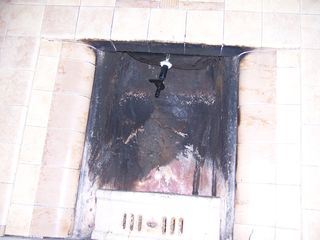
by blogediter | Jun 28, 2019 | Gas Logs, Chimney Plugs, Chimney Problems
Q: Jason, We have a coal-burning fireplace that we will never use. The chimney has a smoke shelf and (as far as I can tell) no damper. The chimney measures 14 X 16 just above the smoke shelf. I guess that means we will need to order a custom Chimney Balloon. How much would that cost and how do we go about doing it? – ST
A: ST, Just to be on the safe side I would go with a 15”X18” custom Chimney Balloon.
FYI, If your smoke shelf is far up your chimney you can also measure the space below the smoke shelf and before the damper if that allows enough space for the Chimney Balloon. The most important thing is to look for the most convenient space to reach. If the best location is higher than 12 inches past where you can touch with your hand, consider purchasing an HEK Extender with your Chimney Balloon. – Jason
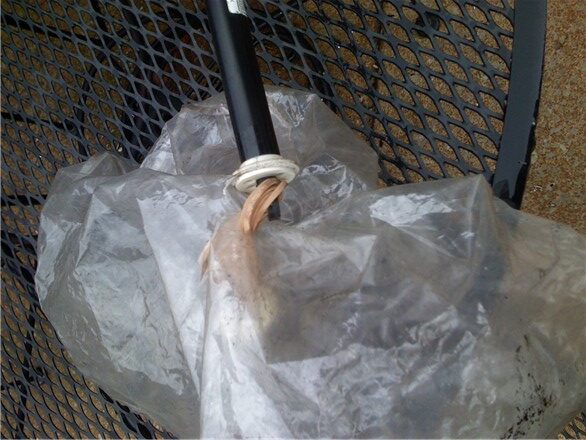
by blogediter | Jun 24, 2019 | Chimney Plugs, Chimney Problems
Q: Jason, I have a Large 36 x 15 Chimney Balloon and over the period of 1 week it tends to get soft and let outside air blow by it. It doesn’t get totally limp or fall from the chimney. Is this normal? RP
A: RP, No it is not normal. The Chimney Balloon is designed to be air tight and should only need a little extra air every 12 months. It probably has a small pin-hole by the seams and as it loose a little air pressure the pin hole closes and keeps it from gong totally limp. The Poly tri-laminate that makes up the balloon portion of the Chimney Balloon is a very tough material that resists stretching and abrasions very well but occasionally a sharp bit of metal or hardware in the flue can puncture all 3 layers of a balloon and cause this to happen.
The fix is very easy. Find the hole, cut a oval patch out of some thick gauge packaging tape, and tape over the hole. The toughest part is finding the hole. What our testing and return personnel do to find and patch a pinhole is:
1)They inflate the balloon with an cordless air pump untill it is drum tight full. Then they passs the balloon under a showerhead to make sure all the soot residue has been removed, and they dry the balloon off with a rag.
2)Then they hold the balloon about 3 inches from their eyelashes and pass the entire surface of the balloon past their eyelash. The cheek and the eye are so sensative to air currents that it will be easy to sense when the pinhole passes by the eye or cheek and blows air at it. they then inspect that area closely with a flashlight to find the exact spot that the hole is at.
3)They cut an oval patch out of very thick gauge 3M packaging tape and they place the patch over the hole so there are no bubbles or wrinkles under the patch.
4)Then they let the Chimney Balloon set for 48 hours fully inflated to make sure it doesn’t loose any air.
If you want to do this on your own you are welcome to do it yourself. Or you can mail it to our return testing lab with a note explaining the situation. They will be happy to do it for you and return it to you free-of-charge.
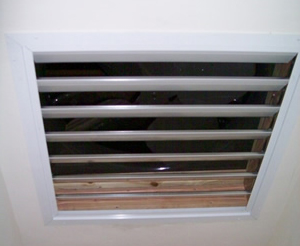
by blogediter | Jun 21, 2019 | Chimney Problems
Q: Jason, I’ve been thinking of various ways to insulate my whole house fan for the winter and happened to your product. I was thinking of removing the shutter and placing the Chimney Balloon in the plenum space just as you would a chimney. Have you ever had anyone inquire about this application? Any idea what level of R-value it may offer? Thanks for your time! – RF
A: You are bringing up a little known, but much used, application of the Chimney Balloon. HVAC contractors use the Chimney Balloon all the time to seal off ducts like you are referring to with your whole house fan systems or HVAC duct systems. The Chimney Balloon is quite effective in air sealing this way.
Unfortunately, we cannot have an R-value assigned to our product since that rating system applies to insulation building materials like fiberglass batting and windows. The Chimney Balloon is an air sealing product that the R system measurement does not apply to (much like Tyvek wrap is not R system rated). However, in a vent environment air sealing is key since it is the unwanted cold air currents through the vent system that you want to stop.
Keep in mind that the Chimney Balloon will take up about 9″ to 12″ in depth space (top to bottom of the balloon) when inflated in a vent or duct. The Chimney Balloon handle/valve can also be shortened if necessary, so it will only require about another 4″.
If you have any questions about your application give us a call at 608-467-0229 and we can walk you through getting a properly fitted Chimney Balloon to plug your whole house fan vent. – Jason
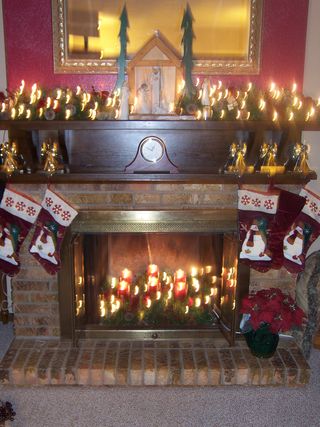
by blogediter | Jun 19, 2019 | Chimney Problems
Q: I have a very old fireplace that is not operational and I use strictly for decoration. the flue in masonry and unlined. It was capped/closed at the top by the previous owners. I want to get a Chimney Balloon because I suspect that there is still heat loss through this flue gave the age of the house–120+ years old.
However, I also like to burn decorative candles in the fireplace from time to time. Will the Chimney Balloon work in this case or do I need to find something more fireproof? how much space should I allow between the candles and the Chimney Balloon? Thanks.- PH
A: A Chimney Balloon will help this capped chimney retain more heat by closing it low in the flue and tight. But you don’t want it too close to the flame because it is designed to melt and release at a temperature of 180-230 degrees Fahrenheit.
If you keep the candles at least 3 feet away from the Chimney Balloon and keep the wicks trimmed you should not have a problem. But if you have 12 candles raging in the fireplace with long smokey flames you could easily get up to the 180-230 Degree flash point.
Personally, I burn a 6 candle candelabra in my fireplace in the summer and I have a 9×9 Chimney Balloon installed about 3 feet above them…and I have never had a problem. – Jason
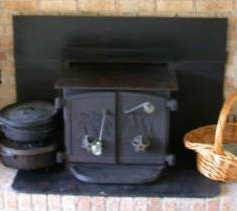
by blogediter | May 17, 2019 | Chimney Problems, Fireplaces
Q: Jason, On warmer winter days and rainy days, we have a strong smoke smell in the house. We have a fireplace insert. Would the Chimney Balloon help with this problem?- SQ
A: Dear SQ, The first thing you can do to cut down on smoke smell during the humid days is first to clean the ash out of the fireplace insert with a shop vac. Humidity has a bad habit of making soot, creosote, and ash to smell stronger.
Some people are under the misconception that a chimney sweeping or cleaning will remove this burnt smell, and I have not found that to be the case. Chimney sweeping is good and should be done regularly, but the brushing action often stirs up the creosote and ash in the flue making it stronger smelling for a while.
The next step is to separate your flue from the house by sealing it off. A Chimney Balloon will work to stop the smelly fireplace stink if you can access the chimney flue opening. Some inserts have metal baffles in the firebox that prevent access to the chimney flue from the firebox. However, there should be a way to access your flue since a chimney sweep has to do this in order to sweep the chimney and then get the ash he brushed off out. You may want to ask your sweep how he accesses your lower flue to remove the ash he brushes off the flue wall. There may be an ash clean-out or removable portion of your flue pipe that you are unaware of. If you can touch the inside of the flue or damper opening area then you can install the Chimney Balloon and it will seal off the chimney low and tight and will not allow the creosote buildup in the chimney to stink up the house.
If you still have a smell to deal with it is probably from the firebox. To further neutralize any lingering smell, you can use a large salad bowl of white vinegar. Just put a good amount of vinegar in the bowl and set it in the firebox for a day or two. This can also do a great job of neutralizing the fireplace burnt smell.
If you need to go one step further, you can also treat the firebox with baking soda (just remember to remove the vinegar bowl first). Sprinkle baking soda liberally over the floor and walls of the firebox. Let it set a few days and then vacuum it off. – Jason
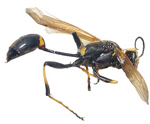
by blogediter | Mar 25, 2019 | Gas Logs, Chimney Problems
Q: Jason, I live in Dallas TX and I have a gas log fireplace. Every fall I get wasps coming in through the fireplace chimney and they make it through the damper into the house. Right now I am running the gas log 24/7 to keep the wasps out, but I know it is going to cost me in the utility bill at the end of this month. If I put in a Chimney Balloon will it seal tight enough so the bees cant get in the house? Can the bees sting through the Chimney Balloon? – TY
A: Dear TY, In the late fall (usually November) we get inundated with calls from fireplace and gas log owners that have wasps and bees coming down their fireplace chimney and right around their metal damper.
The Chimney Balloon seals wall to wall inside the chimney flue so it is a very good way to plug the chimney nice and tight so the wasps have no entry point through the flue. The Chimney Balloon material is made of a multilayer laminate so the wasps would never sting their way through it. But, It is always a good idea to get the Chimney Balloon installed before the wasps start their annual pilgrimage down your chimney. Once wasps start coming in they generally do it en-mass, so it is best to cut them off first.
Plugging the flue will allow you to turn off the gas log fireplace and save some of that gas you are burning up. It also won’t hurt for you to look around for other entry points that the wasps and bees may be coming in through like soffits or window jambs – Jason





